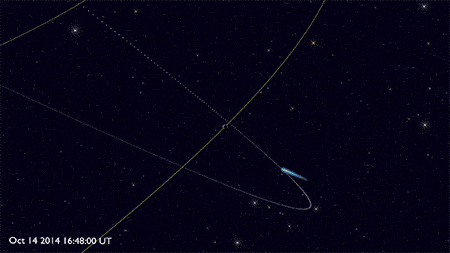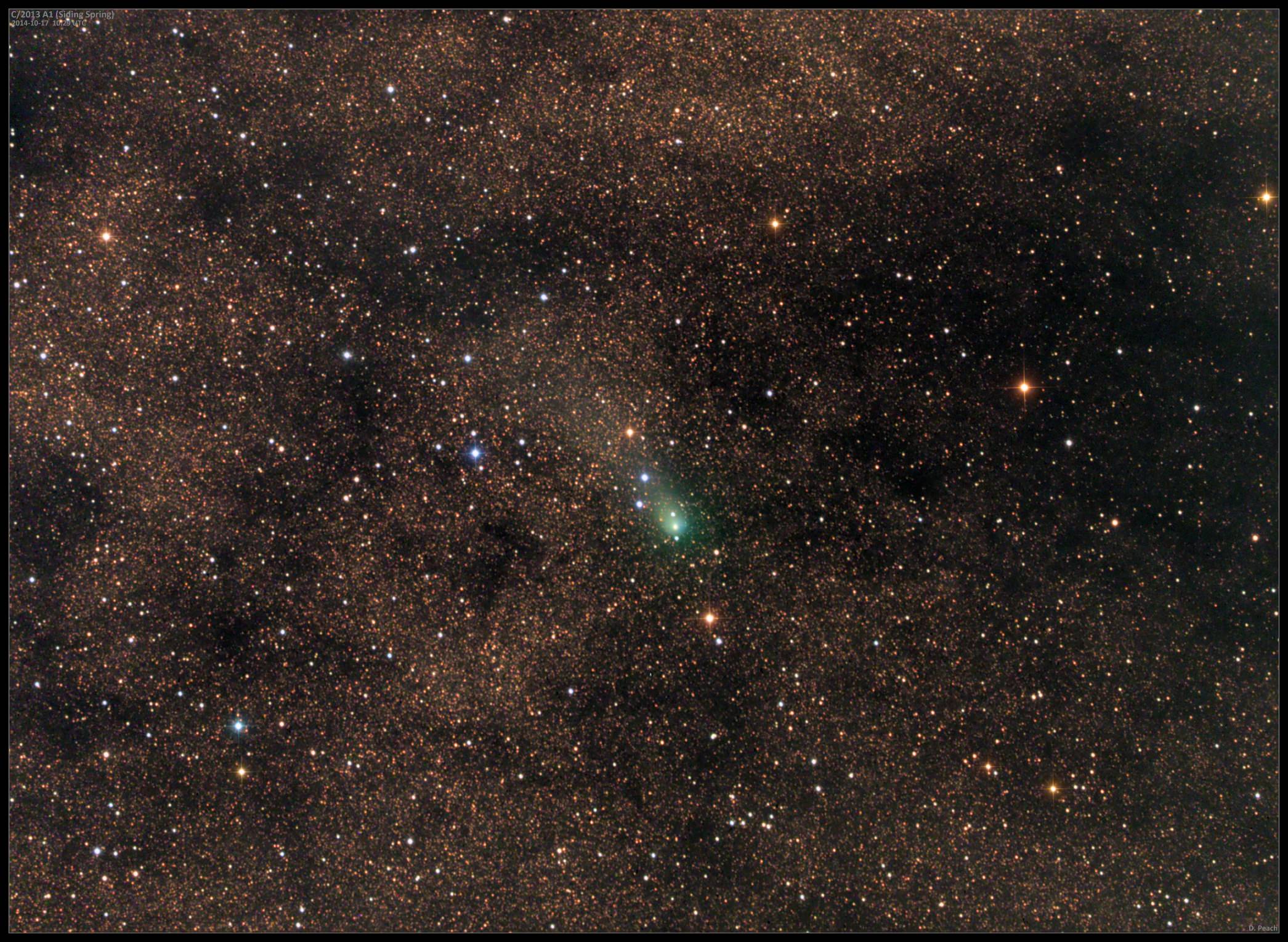The excitement continues to build as Comet Siding Spring rapidly approaches the Red Planet, and here’s the latest view of the comet from prolific astrophotographer Damian Peach. While Comet Siding Spring’s encounter with Mars on October 19 will not be visible from Earth with the unaided eye, skywatchers in mid-northern latitudes, can now view the comet; an 8-inch (20 cm) or larger telescopes is needed to follow the comet as it travels from Scorpius north to Ophiuchus and its encounter with Mars on October 19.
The comet will come within 139,500 km (86,000 miles) above the planet’s surface on Sunday.
In Depth: How to See Comet Siding Spring as it Encounters Mars
Below, see a really nice animation put together by Kevin Gill of the path the comet will take past Mars.

Kevin said on G+ that his animation is based on vector ephemeris from the JPL Horizons system.
As our David Dickinson discussed earlier this week, if you were an astronaut stranded on the surface of Mars, the comet’s passage would be a spectacular sight under the dark Martian sky. Some scientists suggest it could even spawn a short but brilliant meteor shower caused by cometary dust grains plunging into the Martian atmosphere.
The spacecraft in orbit around Mars will be watching Comet Siding Spring too. The fleet of spacecraft from ESA, NASA and ISRO will hide behind the Red Planet on Sunday morning, trying to avoid possible bombardment by tiny grains of dust from the comet. But before and after that, the spacecraft will attempt to gather data on the comet as well as try to measure how the gas and dust interact with the Martian atmosphere.
Stay tuned for news on the comet’s encounter with Mars.


Twenty years ago we had six spaceships visiting Halley’s comet: the so0called Halley Armada. Now we’ve got five spaceships and two rovers to study this comet.
“The fleet of spacecraft from ESA, NASA and ISRO will hide behind the Red Planet on Sunday morning, trying to avoid possible bombardment by tiny grains of dust from the comet”. ~ Earlier today on the weekly space hangout that Fraser hosts, Morgan Rehnberg said just the opposite, that the chances of a craft being hit were remote enough that the agencies were NOT going to hide behind Mars but instead observe the event en toto. Did I misunderstand him or is one of your stories addended with later information per changing the plan?
Maybe that big old sunspot rolling around from the farside has sent a CME to Mars and BANG! Will brighten up the comet for the unaided eye! #Yes!
Q: How much will this close encounter with Mars alter Comet Siding Springs’ orbit, if at all?